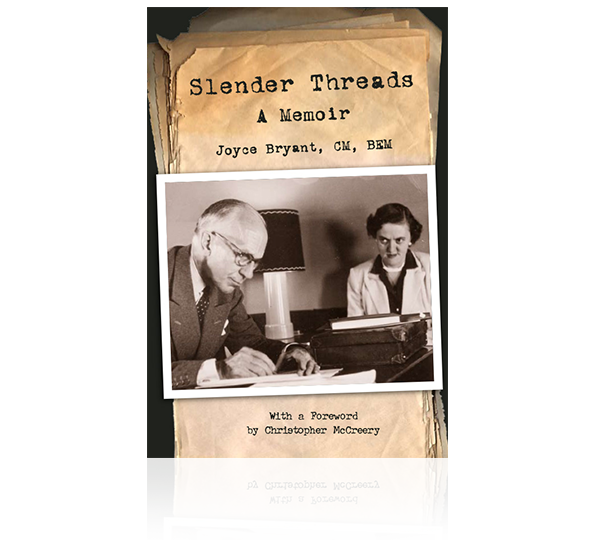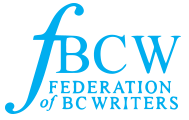The Process
The process of completing and publishing a life story can be divided into three parts: manuscript preparation, book and cover design, and printing and binding.
The great thing about the process is that while it entails a certain amount of effort, it is immensely rewarding and a lot of fun! And keep in mind that you retain control and have final say every step of the way.
How does the process work? Each project is different, but for a storyteller who “just wants to talk” and leave the rest to us, this is how it might unfold.
Free No-Obligation Consultation
It all begins with a complimentary, no-obligation consultation at a place of your choosing — possibly your residence, office, or a coffee shop — where we explore the project and get to know each other. I listen as you talk about your ideas and how we at lifewriters.ca can possibly help you, and then I answer your questions and ask a few of my own. I also show you some books that other clients have published so that you can get an idea of what is possible. “Begin with the end in mind!”
We discuss options and try and form an idea of what the project will entail. Typically, most of the material for the book will come from a series of guided audio-recorded interviews with you as well as any written material that you provide. A complete life story usually requires between 10 and 15 hours of interviews.
Ideally, this meeting generates enough information for me to prepare a tentative Letter of Agreement.
(If for whatever reason you decide not to proceed, no harm done.)
Letter of Agreement
Following a request from you, I prepare a quote, or Letter of Agreement, for the manuscript portion of the project. This detailed, several-page contract describes the project, the services we will provide, the number of hours of interviews, a tentative schedule, general terms and conditions, and a full, all-inclusive fee and schedule of payment.
We usually prefer charging by the project rather than on an hourly basis, as this ensures that there are no surprises for you or for us. The fee is firm, includes all revisions, and will not change unless you alter some significant aspect of the project. (When it comes to money matters, we are firm believers in “no surprises.”) This document serves as a blueprint of sorts and guides us during the process. Read a sample Letter of Agreement.
Note: The book / cover designer and the printer will each contract with you separately for their services.
Interviews
Once a Letter of Agreement is signed and I receive a deposit, I ask you to complete a biographical questionnaire and take part in one or two audio-recorded “pre-interview” sessions, either on the telephone, Skype, or at a place of your choosing. Typically, I ask you to give me an overview of your life in 30-60 minutes, identify themes or storylines that you would like developed, and stipulate any topics or events that you wish not to talk about. This enables me to get to know you and better prepare for the interviews.
We then schedule a series of audio-recorded interviews. Normally we approach your life in a chronological manner. Preparation is the key. A few days before each interview, I will send you a number of memory-jogging, thought-provoking, intuitive questions. I will also ask you to gather relevant photos and memorabilia as these often evoke powerful memories. The goal is for you to have time to ponder the questions and reflect on what you want to say.
The interviews, which are relaxed and informal, usually take place at a location where you feel comfortable and which is free from distractions. Often, this is your home or office. (Upon request, I will conduct telephone interviews or use Skype.) They last between 60 and 90 minutes, and we schedule them for the time of day that is best for you.
My goal is to do what I can to set you at ease and then pose the questions and get you talking! The more you talk, the better the interview. I’m a good listener! The audio recorder is unobtrusive — about the size of a pack of cards — yet picks up everything you say.
While the interviews are structured, I am always ready to explore relevant topics that you the narrator introduce unexpectedly.
A crucial element of any interview is a respect for privacy. Most narrators have topics that they don’t want to talk about, or having talked about, don’t want repeated. A good interviewer understands and respects this and keeps secrets.
Ideally, the story-telling process should not be rushed. Some compare it to peeling back the layers of an onion — as you engage in it, you dig down through layers of memories, uncovering things long forgotten. This takes time and if not rushed, makes for a better, more authentic, finished product. With this in mind, the interviews are spaced a week or two apart so that you have time to preview and reflect on the questions for the next session.
Transcribing
A professional transcriptionist then transcribes the recordings word for word. By prior agreement we can provide you with these transcripts as well as the digital files of the audio recordings.
Research and an Outline
Many narrators have archival material that they wish to draw on or include in their story. This may include genealogical records, personal correspondence, or community histories. I gather the supplementary documents and then prepare an outline of the manuscript for your approval. This includes basic chapter breaks and overall themes.
Ghostwriting, Editing, and Revising
I then go to work on the transcript of the interviews, ghostwriting and crafting it into a polished, readable, and engaging narrative that retains your voice and character. As much as possible it is your words, phrases, and mannerisms — you talking to the reader without the distracting “umms” and “uhhs.” As necessary, I weave in extracts of documents as well as research material that provides context about the locations and times in which the events took place.
I usually submit the first draft of each chapter to you as I complete it. You have ample time to read it, mull it over, and request changes, additions, and corrections. Once the entire first draft is completed and you have made your corrections, I complete your revisions and submit it again.
Normally, you have three opportunities to review the manuscript and make changes. After a final copyediting — making corrections in grammar, spelling, punctuation, and word usage as well as ensuring overall consistency — the content of the manuscript is finalized, and we move to the second phase of the project, which is choosing images and designing the covers, spine, and interior of the book.
Photos, Memorabilia, and Book and Cover Design
By this time, you are aware of the possible design options and book formats, but now is the time to make some decisions. Which photos and memorabilia will you include? What format will the book be? Casebound or soft cover? What kind of text paper? Will the interior pages be black and white or colour? How many copies will you need? The book designer, Bill Glasgow, will usually meet with us to offer advice. Again, we will also furnish you with several sample books to help you in your decisions.
Depending on your decisions, we contact a book printer (we work closely with two or three printers) and request an estimate. Bill Glasgow will also provide a contract for his services.
I work with you to choose photos and other memorabilia for the book, decide where to position them in the manuscript, and help you write the captions. The book designer scans them, retouches the photos if necessary, and places them in the manuscript. He then designs a sample chapter using two or three different styles for you to choose from.
We then create the content for the “front end” of the book — the title page, the copyright and credit page, a dedication page, the Table of Contents, a forward (if necessary), a preface, and an acknowledgements page. Other options include an ISBN and an index. The first draft of the designed manuscript — as it will appear in print — is submitted to you to review. After incorporating your changes — perhaps you wish to change the location of some photos — we provide a revised version. You normally have two opportunities to review the manuscript design and request changes. When everything is finalized and approved, I proofread the manuscript design, just before it goes to press.
After consulting with you, the designer designs a front and back cover and spine for you to review and suggest changes.
Printing and Binding
Once you have approved the final manuscript and cover designs, the designer sends the digital files of the book to the printer. They provide you with one copy of the book — the print proof — for you to inspect and approve. The books are then printed, bound, and delivered to your door.
Mission accomplished! You have created a priceless gift for present and future generations.
We recommend that you hold a book launch of some sort to celebrate. We can help with this by suggesting a format, providing promotional colour posters and bookmarks, and writing a media release.
Does all of this appeal to you? If so, give me a call toll free at 1.800.864.9152 or email me. We can discuss your ideas in a complimentary, no-obligation consultation.
Philip Sherwood
Owner, lifewriters.ca

“Without Philip’s help, I could never have written and published my memoirs. . . I benefited first hand from his intuitive editing skills — his ability to rearrange a passage with skill and subtlety without sacrificing anything of the narrative. And all done with a lightness and humour that makes working together pure fun. Thank you, dear Philip!”
— Joyce Bryant, CM, BEM, author
“What the next generation will value most is not what we owned, but the evidence of who we were and the tales of how we lived. In the end, it’s the family stories that are worth the storage.”
– Ellen Goodman





